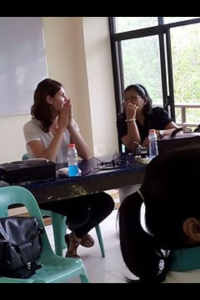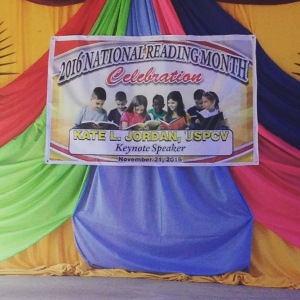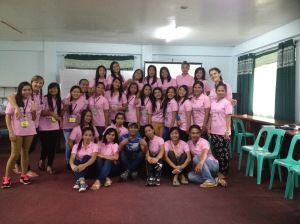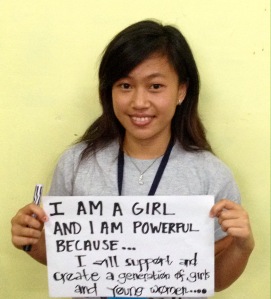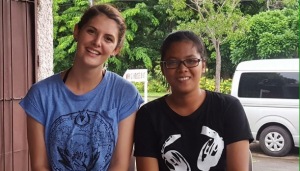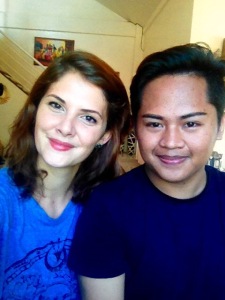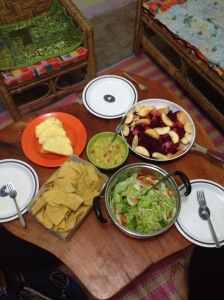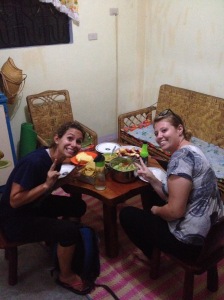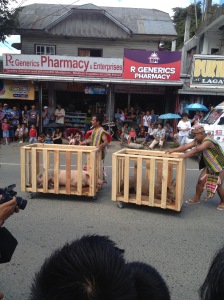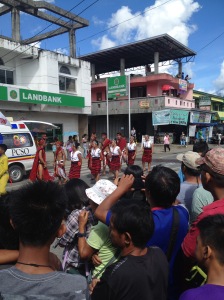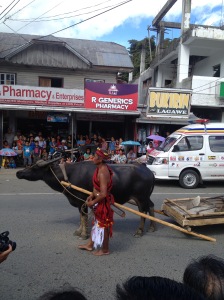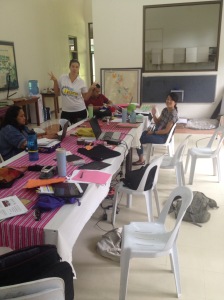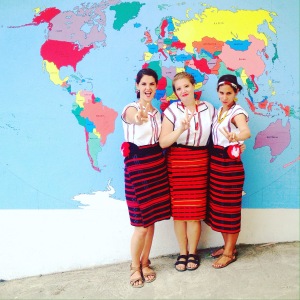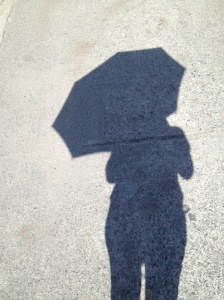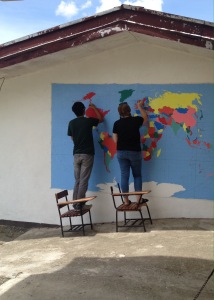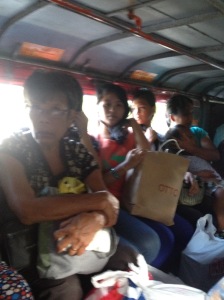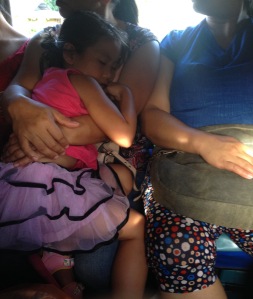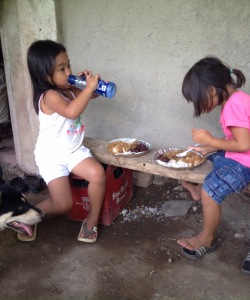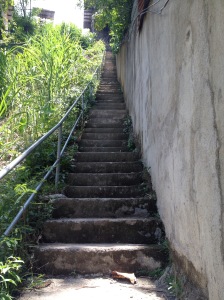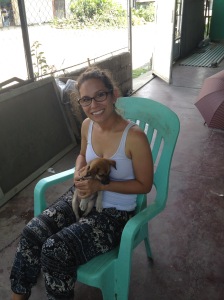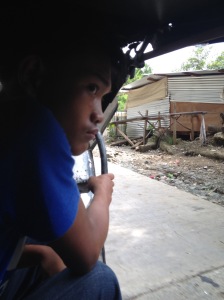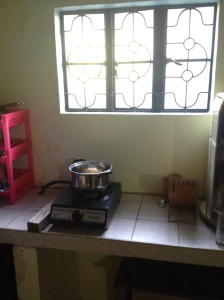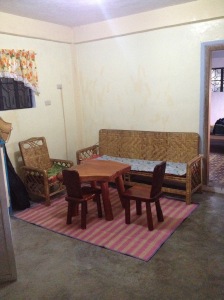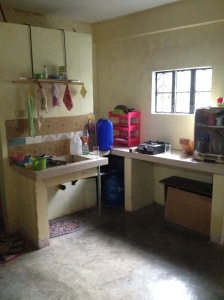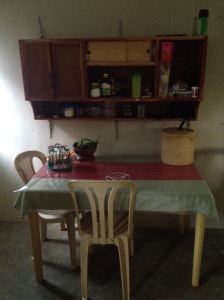Given that the Philippines is a nation comprised of over 7,000 islands, it is challenging to provide a standardized packing list for incoming Peace Corps volunteers. Climate, culture, and the volunteer’s role—variables that might give some insight into what to pack—vary so widely among the different site placements in the Philippines that what is ok lang, or acceptable, in one area may be bawal (forbidden) or taboo in another region
The following list details what has worked for me–a big footed female living in the mountains and serving as a Children, Youth, and Families volunteer. I did my best to touch on what I am happy to have, what I could have left at home, and what I wish I brought along. In addition, I’ve included some tips related to getting yourself ready for Peace Corps service
Members of Batch 275, the incoming group of volunteers arriving in the Philippines in just a few months—we are so excited for you to get here! I remember how scary it felt to cram my life into just two suitcases. I was so worried about forgetting something and agonized over whether or not I had acquired the perfect gear for my impending adventure.
Almost a year in, I still feel unprepared most days. But all of the stuff that I did or didn’t bring with me in my suitcase has nothing to do with that. One of my favorite quotes reads, “To be fully alive, fully human, and completely awake is to be continually thrown out of the nest.” Peace Corps service is exactly that—being thrown out of the nest. Continually. Four or five times a day.
So take a deep breath. Shove some stuff in a bag, forget about it, and spend time with your family, your pets, and your best friends. Worst case scenario, there is NOTHING you can’t buy here at one of the Philippines’ many malls (P.S.: keep your eyes peeled for an impending post on mall culture in the Philippines…)
For incoming volunteers: if you have any questions or concerns about what to pack/what to expect etc.—please don’t hesitate to reach out by email (katejordan6@gmail.com) or on Facebook
Things I Brought That I Use Every Day
My phone is the primary means through which I access the internet, listen to music, jot down notes, and take pictures. Smart phones are commonplace in the Philippines, so using an IPhone or an Android won’t necessarily make you stand out (more than you already will). Some volunteers choose to use their smartphone as their primary phone by having a local sim card cut and inserted into their unlocked cellphone from home. I continue to use my Peace Corps provided phone (just a regular old Nokia…with Snake!) but I carry my IPhone with me most of the time for music/taking pictures.
It’s best to download apps before coming to the Philippines, as slow internet can be a real hindrance. Here is a short list of apps I use often:
Instagram: Got the keep the followers happy with pics of your awesome site and community. Instagram loads about 50% of the time, but it’s a nice way to keep up with what’s going on with friends from home, other volunteers, and Beyoncé.
WhatsApp: I had to register with my U.S. number, so it was absolutely essential to download this before leaving home. WhatsApp is how I communicate with family and friends. The calls are super clear AND the messaging service works even when the internet is slow. Encourage your family and friends to sign up!
Pinterest: Like Instagram, getting on Pinterest is very internet dependent. However, if the internet gods work in your favor, it’s great to have the app downloaded so you can search easily for activities, recipes, and care package ideas. Or you can do like I do, which is to stay up until 3am, when the internet is at its best, to pin pictures of houses I will never live in. Whatever keeps you sane!
WordPress: If you plan on keeping a blog, I’d recommend WordPress. The app is user friendly and you can upload pictures right from your phone. By following all blogs tagged as ‘Peace Corps’, you can easily keep up with the blogs of Peace Corps volunteers serving around the world.
One of my favorite features is the ‘Stats’ page, which allows you to keep tabs on the demographics of your blog readers. For example, I can see that my blog has been accessed in the U.S., Philippines, Peru, Thailand, Ecuador, the U.K., Vietnam, Guatemala, Germany, Dominican Republic, Burkina Faso, Moldova, Albania, India, Israel, South Korea, Norway, Argentina, Nicaragua, Singapore, Japan, Mexico, Ireland, Indonesia, Australia, Bolivia, Russia, Estonia, Canada, Cambodia, Colombia, and Sweden. AKA I’m on my way to world domination. Pretty cool!
Stitcher: This is the app that I use to listen to podcasts and streaming news broadcasts. I like Stitcher because it has a wide selection of eclectic podcasts and allows you to save episodes for offline streaming. Always happy to share podcast suggestions!
Overdrive: OverDrive is an app that lets me listen to audiobooks downloaded through my public library in the States. I can download multiple audiobooks at a time and save them directly to my phone—for free! The app also lets you slow down or speed up the speaker’s voice, which I find really helpful if I don’t jive with the reader’s tone.
Spotify: I used Spotify in the States and continue to pay for my U.S. subscription ($10/month to be able to save music to my device and no ads…not bad!) because I need to have regular transactions to keep my U.S. bank account active. There are rumors that it is possible to set up Spotify using your Filipino bank account, therefore paying the going rate for the service here (129P per month), but I have yet to try to figure it out. Spotify is awesome because you can make and share playlists.
Stop, Breathe, & Think: I love this simple, straightforward, and free meditation app. You input your current emotional/physical state and it provides you with a list of short guided meditations (under 10 minutes) relevant to your current condition. No internet is needed to access these meditations! Even more, the app tracks your meditation time and incentivizes you to keep meditating by giving you stickers for each milestone you achieve. There is also a meditation timer for days that you want to sit for a bit longer without a guided meditation.
Kindle=life. Peace Corps volunteers read. A LOT. Real books are great too, but they are just about as expensive here as they are in the States. With a Kindle, you can read any book you like, PLUS you can carry around hundreds of books at a time without even breaking a sweat!
Between accessing EBooks from my public library in the States and the multitude of EBook files I have ripped off from other volunteers, I think I have paid for a total of three books since I have been in country. The IRC (Information Resource Center) at the Peace Corps office has a great selection of paperbacks to borrow if you are truly desperate to have a real book in your hands.
Peace Corps does not mandate volunteers to bring laptops to service, but I find that they are pretty essential. Important documents are distributed by USB and volunteers are expected to complete their VRFs (Volunteer Reporting Forms) on a computer. As this complex reporting form requires a special software and must be submitted online, it’s pretty unusual for a volunteer to be able to complete this mandatory task on an office computer (that is, if your office even has a computer). In addition, your office may expect you to have your own laptop in order to write proposals and submit important documents. Also, how else will you watch endless movies and TV shows on your hard drive?
I have a Microsoft Surface, but I wouldn’t really recommend it; my computer is not compatible with the Peace Corps VRF software and only has one flash drive. I would suggest bringing a sturdy and well-functioning laptop that you are not emotionally attached to (all electronics tend to crumble here over time). Both Macs and PCs are fine, although I think it is easier to get a PC repaired if need be!
- Triple blade razors (bought in bulk in the states)
Americans are hairier than most Filipinos. Before coming, I purchased a ton of triple razor cartridges. They aren’t the best razors ever, but they are better than grating my skin with the poor quality razors found here. Also, it’s nice not to have another expense to worry about.
I use my New York Public Library Card to access and download free e-books directly to my Kindle. I think many libraries have this service now and it is AMAZING. I’m not going to explain the logistics here, but it’s pretty easy to figure out how to get it set up (there should be a tutorial on your library’s webpage).
- Pictures of family and friends/mementos from home
People are curious and you can use pictures/postcards/maps/other mementos to decorate your room.
- Deodorant (bought in bulk in the states)
According to other lady volunteers, the deodorant here does not work as well as deodorant in the States. I have yet to encounter this issue, as I brought loads of extra deodorant from home on the suggestion of a previous volunteer.
Seriously, using a DivaCup will be one of my biggest takeaways from service. It takes a little bit of finagling to figure out these menstrual cups, but once you do, I swear you will be a convert. No need to worry about having access to a bathroom/toilet paper when you can leave the DivaCup in until you find a convenient time to clean it out. Also, no risk of toxic shock! It’s important to note that tampons are more or less unavailable here (I’ve never seen them, but maybe they exist somewhere in Manila at an extremely high price…) Unless you plan to pack a lifetime supply of tampons or you feel comfortable using pads, a DivaCup may be your best option. I bought some off-brand menstrual cups off Amazon because they had a two for one deal, and they have worked just fine!
I’m a nerd and like using my headlamp to read in bed.
Regardless of how involved you are in your community, you will have many hours of free time. Most volunteers spend this time reading or watching movies. An external hard drive is a handy place to store all of the media files that are shared among volunteers. Don’t worry about bringing a hard drive filled with downloaded books and movies; leave that to the more technologically inclined volunteers and then just mooch off of what they have brought. (Unless you are that technologically inclined volunteer, in which case, please download some awesome stuff!)
Things I Wish I Brought
- A hiking backpack that zips around the sides (rather than opening at the top)
The backpack I came with opened at the top, which was really frustrating when looking for an item at the bottom of my bag. I recently purchased a new backpack that zips around and it has made all of the difference in keeping myself organized while traveling.
Someone said something to me recently in terms of packing for Peace Corps that I thought was rather profound: “Don’t pack for the person you think you will become in Peace Corps, pack for the person you are today.” If you wear makeup every day, chances are that you will still want to wear makeup every day when you get here. Even if it all melts off.
Filipinos take looking good very seriously and at least in my case, this has meant continuing to wear makeup just like I would in the States, except probably with more lipstick. U.S. makeup brands can be expensive (and local brands pale in comparison), so if you have some favorite makeup—definitely bring it along.
Smelling good is a thing here. Inevitably someone will make a comment about how you smell (and how much you weigh, how you talk, how you walk, etc.), so make sure that the odds are in your favor and try to smell good! Also, sun, humidity, and sweat will make you stank in ways you never thought possible. Although I never did so at home, I usually carry body spray and deodorant on me at all times here.
You can buy cheap body sprays and popular perfumes by the ounce at the mall, but if you have a signature scent and it’s not too much of a burden to put it in your bag, I’d recommend it. Even if you just wear your favorite perfume at important events like Swearing In, you will feel more like yourself.
Travel towels are cool, but for the most part—you won’t be travelling. You will be living somewhere for two years and a fluffy bath towel is just a joyful thing to wrap yourself up in. I had my parents send me a bath towel from home and I find that the quality is far superior to the bath towels that I see for sale here. Bring both if you are concerned about having a towel for travel!
- At least three pairs of jeans
I wear jeans for work every day, as do many other volunteers. It’s possible to buy jeans here, but they cost about the same as they would cost in the U.S. and they don’t tend to have longer sizes. Better to bring a few favorite pairs from home. You will wear them, I promise.
- More clothes that feel like “me”
I feel the same way I do about clothes as I do regarding my tip about makeup. Serving in the Peace Corps does not automatically mean that you will become some type of Jungle Jane/Crocodile Dundee chick or dude. That is to say, if you don’t already wear zip off shorts/ moisture wicking shirts/Chacos, you probably won’t want to wear them during your entire service. Or maybe you will, who knows! But I do know that I brought a lot of this type of clothing and I never wear it.
What do I wear? The same shirts and jeans that were my favorites back at home. When living day in and day out in a foreign land, you will want to wear things you remember wearing at home. Down to your underwear! If you like wearing cute underwear, bring it!!
Although everyone has a different dress code at site, I think I can safely say that many volunteers share my same regret about bringing too much adventure gear and not enough every day wear. To back my claim, I will cite as evidence the ravenous descent of female PCVs upon the nearest H&M during one of our recent trainings. The store was decimated and we all showed up to meetings wearing the same (cute!) outfits.
Coffee is available here, but instant is favored over brewed and coffee grounds tend to be expensive. Tea options are surprisingly slim and also expensive. Just thought I’d mention these because they are easy to carry and make good gifts (pasalubong) for your host families!
Cooking with limited selection of produce can get a little dull. My parents sent me some awesome Trader Joe’s spices (Lemon Pepper and some type of Italian Spice blend) and it’s really improved my bland repertoire.
- Additional pairs of shoes
I wear a Size 11, so shoes that fit are hard to come by anywhere in the world. If you have big feet, I’d really recommend bringing extra pairs. The weather (rain and humidity) and constant walking here tends to wear shoes out pretty fast. *If you get stuck though, Payless here sells shoes for bigger sizes! So weird considering the average height of Filipina is just about 5 feet. However, their shoes are expensive for our Peace Corps salaries!*
- A good set of pens/colored pencils
I write a lot of letters here and I wish I had better tools to step up my stationary game. Coloring is also a great way to blow off stress!
- Better pasalubong (gifts to give to your two host families and to your supervisor/office)
I gave my host family some small candies, postcards, and keychains, but I wish I gave them something more substantial and potentially something with some brand recognition (ex: Nutella, Hershey/Cadbury Chocolates). Also, I assumed I would be living with kids and ended up staying with single women during both of my host family stays; if I were to do it again, I would not by gifts specifically for children before knowing my host family makeup. Coffee and tea is a great tip because it can be shared and it gives you an excuse to sit down and chat when you are first getting to know each other.
Things I Never Use
It’s not possible to ride a bicycle at my site (so.many.mountains), so the helmet, lock, and biking gloves that I brought with me are effectively useless.
However, given that many volunteers DO ride bikes at site, I’d still suggest bringing this type of gear if you are someone who thinks you might like to ride a bike. If you don’t end up being able to fulfill your biking dreams, I’m sure another volunteer will be more than happy to take your helmet off your hands.
FYI: bike helmets are mandatory for all volunteers! I picked mine up at a garage sale, so it wasn’t too much of a heartbreak to give it away.
Controversial opinion! Thought they were ugly before I left home and had to hype myself up even just to wear them around the house to break them in. Still think they are ugly and never wear them.
Lesson: Stay true to you. I wear normal, girly sandals to work every day and this is the norm at my office. In fact, most women wear wedges. Also, I have flat feet, so the arch makes my feet hurt. I feel much more comfortable wearing Tevas if for some reason I am in need of adventure sandals.
Anyone who wants a pair of Women’s Size 11 Chacos, worn only few times—they are yours! Hit me up and we can find a way to get them to you.
General Tips Before You Go
- If you are interested in holding onto your cellphone number in the States while you are in the Philippines, call your carrier (I use Verizon) and ask if it is possible to put your phone line on a military suspension while you are in Peace Corps. In order to keep your number reserved, I think you need to call on a yearly basis to reaffirm your service; you might also have to fax or scan in some documentation, but the person I spoke with was happy enough just to take my word for it. I didn’t have much trouble in getting permission to keep me number, most likely because I am part of a family plan and someone (my mom!) is continuing to pay the bill.
- It’s prudent to get a Power of Attorney while you are gone. This designated person can fill out any official paperwork on your behalf and is authorized to speak with important people who you may need to be in contact with, such as loan providers, doctors, and staff at your U.S. bank. I accomplished this by downloading a PoA template online, customizing it to include my selected Power of Attorney, and getting it notarized at my bank.Pro tip: banks usually notarize things for free if you are a client! Your Power of Attorney has to be present when you get the document notarized, so make a fun day out of it. If I remember correctly, my dad and I won some kind of contest and got free Frisbees and a handful of grape flavored lollipops. Totally worth it. Take one copy of your PoA with you and leave one copy at home.
- It can be really helpful to have copies of all of your important documents located in one place. I don’t have this (yet), but I think it’s a really good idea. Get yourself a folder and include copies of your passport, all credit/debit cards, bank account information, driver’s license, SS card, loan statements, insurance policies, résumé, etc. With internet connection being iffy at best, you’ll save yourself a lot of time having this information all in one place. For security reasons, I don’t recommend leaving this folder lying around, but just tuck it in your bag, put it under your bed, and you will be glad it’s there.
That’s all for now! Hope this is helpful 🙂
